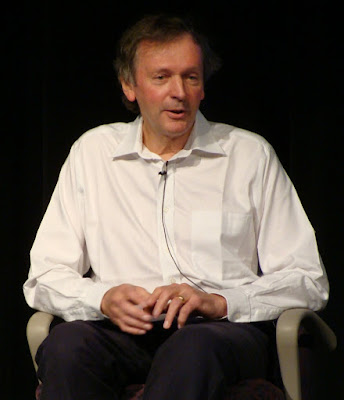By Apuleius Charlton
Special guest blogger
The “Babe in the Blue Egg” spoken of by Crowley is Harpocrates, the Silent God. To me this indicates the difference between the individual and the whole; after all, according to Crowley, the universe is one joke by the General at the expense of the Particular. Accessing the neurogenetic circuit triggers joy for the reasons given by RAW: the symphony of life swells and diminishes as a part of the whole. In his Confessions, Crowley writes about the absurdity of sorrow and compares the experience of life to Beethoven:
“My mind became still; the impact of impressions ceased to obsess me, I became free of the illusion of the reality of material things. All events became equally indifferent, exquisite phrases in an eternal symphony. (Imagine listening to Beethoven with the prepossession that C is a good note and F a bad one; yet this is exactly the stand point from which all uninitiates contemplate the universe. Obviously, they miss the music.)”
It would seem that the great boon of sixth-circuit consciousness is a transcendence past the individual and into the collective. Of course, we need that individuality, that ego to effectively engage with the world- those who devote themselves to the sixth circuit are the mystics who renounce ordinary life and spend their time in contemplation or infinite exploration. The sadhus who abandon home and property or the legendary fakirs standing for years about a pillar would be classical examples of a sixth-circuit devotee. For the rest of us, we must figure out how to comport ourselves with the ineffable knowledge of continuity and ecstatic reckoning with our part in said continuity while still finding a way to pay the bills.
That is why Harpocrates, Hoor-paar-kraat, is one half of Crowley’s idealized individual-god being, the other side being Ra-Hoor-Khuit, Horus. Harpocrates is the sense of the incommunicable, at least in the terms of everyday conveyance, that inhabits the “awakened” consciousness while Horus is the function of action that must figure out its individual will amongst the other notes of the symphony. Humanity is quite like a mushroom colony, the individual mushrooms sporting upon the earth are but parts of a greater mycelium network, concealed in the loam.
Honoring both Harpocrates and Horus, commingling and cultivating awareness of the two consciousnesses is the task of the magician, different from that of the mystic. The mystic is welcome to ride the arrow towards the realms of higher consciousness, eschewing worldly matters and dross for the bliss of realms beyond the material, but the magician is tasked with the role of integrating the supernal and the mundane. The magician is neither allowed to write off the messages of dreams, drugs or other states of consciousness and return to the daily world free of the woolly and baffling messages of the Neurogenetic circuit- they must incorporate them and transform their numinous impracticality to something useful, sometimes to aid the individual consciousness in its laboring ascent towards…what? Past the animal-headed gods and the lush maidens of our collective unconscious, beyond the elegant AGCT code of DNA, there is something…design? Purpose? Perhaps. More questions and answers, hunchbacks and soldiers in a seemingly infinite parade leading…where? My bet is towards the stars, whether that is literal or metaphorical is unknown to me.


























